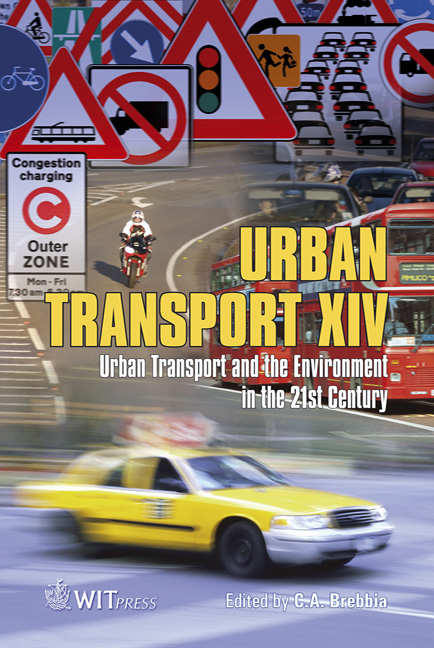Sustainable Mobility Planning In The Tourist Centres: The Estimation Of Transport Demand
Price
Free (open access)
Transaction
Volume
101
Pages
10
Page Range
265 - 274
Published
2008
Size
1,630 kb
Paper DOI
10.2495/UT080261
Copyright
WIT Press
Author(s)
P. Zito, G. Salvo & L. La Franca
Abstract
The aim of the paper is to provide a framework for sustainable mobility planning in tourist centres. In particular, the focus is on estimating the potential non-motorised transport demand and to design the supply of sustainable transport modes (as such as: transit, cycling and walking). The study area is the tourist area of San Vito Lo Capo, the famous historical and swimming centre of Sicily. In this context we have carried out a stated preference survey to evaluate the potential demand of non-motorised transport modes, taking into account a sample of the population. Thus, we have submitted a questionnaire, considering the choice in a competitive scenario of the non-motorised transport modes. The survey was carried out in the period of June–July 2006. Furthermore a multinomial logit model has been calibrated. Keywords: sustainable mobility, tourist centres, transport demand. 1 Introduction The pedestrian and bike mobility needs of comfort, safety and secure green paths attract more users of private transport. The bicycle is an individual nonmotorised mode with low access costs and high efficiency in the use of road space; it is also associated to benefits in terms of health, the environment and quality of life. In order to help alleviate the serious pollution and increasingly annoying congestion problems of cities, the regional government has made several attempts to implement cycle-ways in Sicily during recent years (by nonmotorised mobility plane in Sicily, 2005). This plane foresees the realization of greenways along tourist cycle paths by the re-use of old disused railways and tourist roads with low traffic levels. These attempts have failed notoriously because of the following factors (Ortúzar et al. [10]):
Keywords
sustainable mobility, tourist centres, transport demand.





